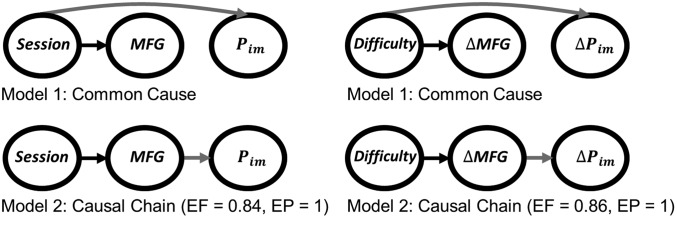Fig. 4.
Brain–behavior relationships. BMS was used to compare common cause models (Upper), in which brain and behavior are independently driven by experimental manipulations, and causal chain models (Lower), in which the behavioral effects are mediated by neural effects. Causal chain models appeared much more plausible, meaning that in the hard condition the effect of session number on choice impulsivity was mediated by MFG activity (Left) and that the effect of cognitive difficulty (hard versus control condition) on the change in choice impulsivity across sessions was mediated by the change in MFG activity (Right). The gray arrows emphasize differences between models. BMS results are expressed as EF and EP.

